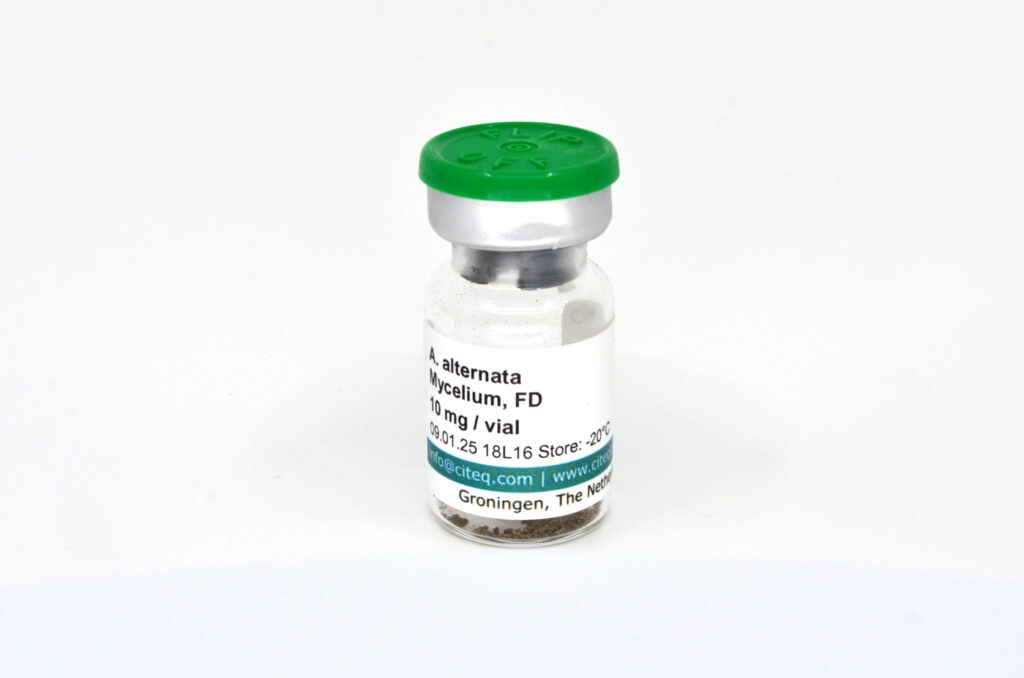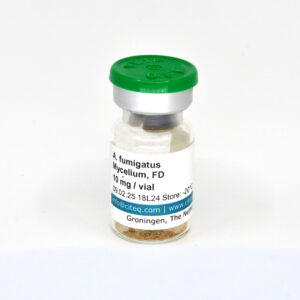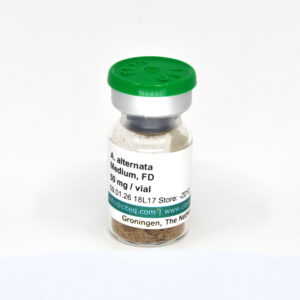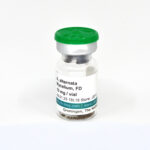
Alternaria alternata mycelium
Extracted mycelium of Alternaria alternata.

Description
Alternaria alternata belongs to the Pleosporaceae family. Alternaria spores can reach levels of thousands of spores per cubic meter of air in temperate areas from spring to fall. 70% of mold-allergic patients have IgE reactivity to Alternaria. A. alternata spores are especially high in the outdoor air during summertime. Alternaria alternata is an important allergen with mycelial fragments and airborne spores, these characteristics are accountable for the allergic symptoms in human with rhinitis, bronchial asthma or skin diseases.
At Citeq, we offer two types of extracts from Alternaria Alternata, a fungus commonly found in soil, plants, and food. It is known to cause a range of plant diseases, but can also cause respiratory allergies in humans. Here, we will explore the difference between mycelium and growth medium in the context of Alternaria alternata. Mycelium is the vegetative part of a fungus, consisting of a network of hyphae, which are thin, branching filaments. Mycelium grows by absorbing nutrients from its surroundings, and can spread over large areas. In the case of Alternaria alternata, mycelium can be found growing on plants, where it can cause disease.
Medium, on the other hand, refers to the liquid in which a fungus is grown in a laboratory setting. Fungal media can vary depending on the needs of the particular fungus being studied, but generally contain a source of nutrients for the fungus to grow on. Common fungal media ingredients include agar, glucose, and yeast extract. In the case of Alternaria alternata, researchers may grow the fungus in a laboratory setting to study its behavior and characteristics. This may involve using a specific medium that provides the necessary nutrients for the fungus to grow and thrive.
So, what is the difference between mycelium and growth medium in the context of Alternaria alternata? Mycelium refers to the physical structure of the fungus, while medium refers to the substance in which the fungus is grown in a laboratory setting. While mycelium may naturally grow on plants, in a laboratory setting, Alternaria alternata may be grown on a specific medium designed to support its growth. In conclusion, Alternaria alternata is a common fungus that can cause plant diseases as well as allergies in humans. Understanding the difference between mycelium and growth medium is important when studying this fungus in a laboratory setting. Like for other respiratory allergen sources, relevant allergens are most like mainly those proteins that readily go into solution when coming into contact with the respiratory mucosa. Those proteins are derived from the mycelium, but are in laboratory setting secreted into the growth medium. It is therefore very likely that harvested growth medium is a good source of proteins with relevance to allergy to Alternaria alternata.
Read more about dissolving the medium extract on this page. On this page we report on the solubility of lyophilized Alternaria alternata medium extract.
Additional information
| Size | 10 mg vial, 100 mg vial, 1 gram vial |
|---|




